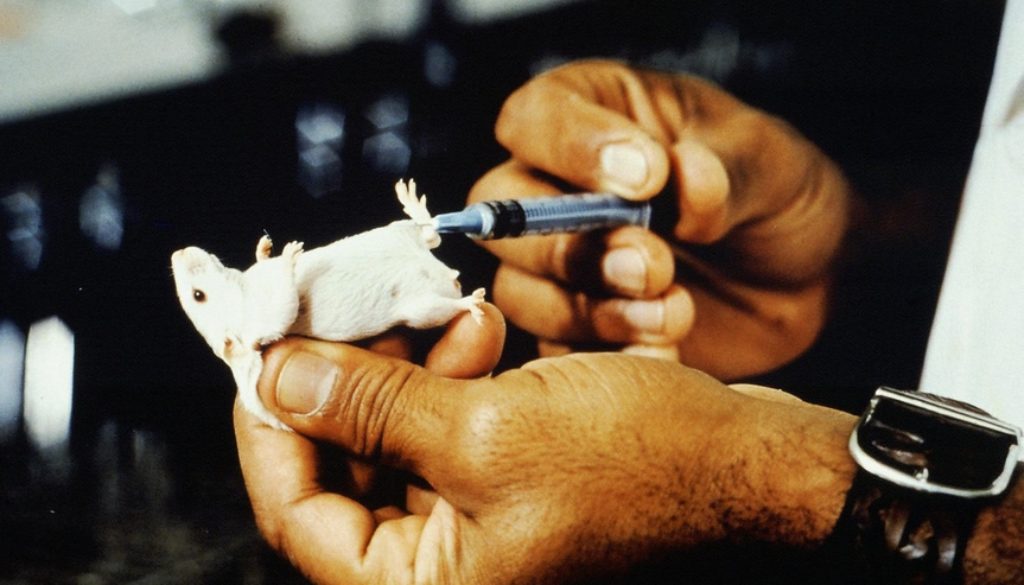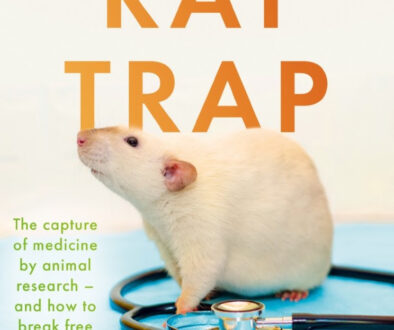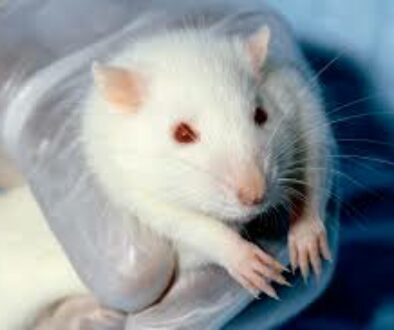Open letter sent by Andre Menache to Cancer Research UK (CRUK).
 Many medical charities who rely for their funding on the goodwill of the general public go on to use this money to support animal research in the mistaken belief that animal experiments will yield data that is relevant to human disease. In his letter to CRUK, Andre Menache presents scientific data to show that animal models are not able to predict human outcome.
Many medical charities who rely for their funding on the goodwill of the general public go on to use this money to support animal research in the mistaken belief that animal experiments will yield data that is relevant to human disease. In his letter to CRUK, Andre Menache presents scientific data to show that animal models are not able to predict human outcome.
Although the letter was not written on behalf of Antidote Europe and even though we do not have a position on animal welfare, we are publishing this letter because of the important public health message it contains. We also consider this letter to be a guide to the general public, to ensure that your donations do not support animal research.
Dr Harpal Kumar MA MEng MBA DSc
CEO of Cancer Research UK
Cancer Research UK Angel Building
407 St John Street
LondonEC1V 4AD
20th January 2014.
An open letter to Dr Harpal Kumar
The role of Cancer Research UK and Corporate Social Responsibility
Dear Dr Kumar,
I am writing to you as an individual and a scientist who wishes to promote consumer health and animal welfare. I write to draw to your attention the Corporate Social Responsibility (defined as an organisation’s contribution and impact to society and the environment) of Cancer Research UK (CRUK), the world’s largest cancer charity, in relation to setting its priorities and objectives.
Among these objectives, I would like to bring three crucial issues to your immediate attention and consideration for response:
- The moral imperative to better inform and educate the public on reducing their potential cancer risk through appropriate lifestyle choices;
- The interpretation of statistical data in CRUK advertising and marketing campaigns;
- The extensive and unnecessary use of animal models in CRUK-funded research.
1. The moral imperative to better inform and educate the public on reducing their potential cancer risk through appropriate lifestyle choices
Cancer is a largely preventable disease, as can be discerned from the following referenced data provided in the table below:
| CAUSE | RISK REDUCTION % REF |
| Smoking | 25% [1] |
| Processed red meat > 40g/day | 16% [2] |
| Alcohol (govt guidelines) | 4% [3] |
| Obesity (related to diet and exercise) | 45% [4,5] |
| Harmful chemicals | 5% [6] |
| TOTAL | 95% [7] |
The table above clearly indicates that, were significant changes in lifestyle to be made through effective public education, potentially 95% of all cancers could be avoided. It therefore makes sense to invest primarily and as a matter of priority in public education and public awareness campaigns, especially those related to smoking and obesity. Yet, on a review of your recent annual financial reports, the case was otherwise.
Annual Financial Report
Budget spent by CRUK on research in 2012/2013: £ 347 million
Budget spent by CRUK on information and education in 2012/2013 £ 17 million
TOTAL £ 364 million
The amount spent on information and education represents less than 5% of the total disposable income of £ 364 million.
CRUK launched 10 goals in May 2007 [8] to be achieved by 2020, which included educational and awareness goals, for example ‘to make the public aware of the main lifestyle choices they can make to reduce their risk of getting cancer’ [9]. However, the amount of money spent by CRUK on information and education has remained essentially unchanged at less than 5% of the available income. One would expect the world’s leading cancer charity to set a bold example in this respect by following through on its goals.
2. The interpretation of statistical data in CRUK advertising and marketing campaigns
CRUK states that cancer survival rates in the UK have doubled in the last 40 years [10]. However, it is important to put this claim into perspective for the benefit of the general public, who so generously support the activities of CRUK.
What I have been able to find from my own research, with regards to determining the appropriate context and therefore analysis, is as follows:
Lead-time bias – the apparent increase in survival rate due to early cancer diagnosis through screening
People diagnosed with cancer who survive for at least 5 years from the time their disease is diagnosed are considered to have survived the cancer. Because cancer is diagnosed earlier through screening, this may give the impression that many more people affected by cancer are surviving the disease, based on the 5-year survival benchmark. However, the principal reason why 5-year survival rates have changed so dramatically over the past 40 years lies in over diagnosis in general and specifically over diagnosis secondary to lead-time bias and length bias [11].
Over diagnosis also factors into lead-time bias
Lead-time bias is the apparent increase in survival rate because the cancer was diagnosed earlier, based on screening. More pre-cancerous lesions are also being diagnosed and counted in statistics even though many would never have proceeded to cancer. This over diagnosis also factors into lead-time bias. Many cancers that are now diagnosed would never have killed the individual but are now counted in survival rate calculations [11].
Increase in cancer for another class – children
Childhood cancers are on the increase in the UK and cancer is now the leading cause of death in children aged 1 – 14 years [12]. Although more children are surviving cancer today, these individuals are still four times more likely to be diagnosed with another cancer later in life than the norm [13]. The fact that babies born today have up to 300 industrial chemicals in their bodies, including endocrine disrupting chemicals such as bisphenol A, requires a robust public awareness program on the avoidance of such chemicals, particularly in relation to pregnancy and breast feeding [14, 15].
3. The extensive use of animal models in CRUK-funded research
The non predictive and misleading nature of animal models must be placed into the context of societal concerns regarding the use of animals in research and testing. Giles writing in Nature states: “In the contentious world of animal research, one question surfaces time and again: how useful are animal experiments as a way to prepare for trials of medical treatments in humans? The issue is crucial, as public opinion is behind animal research only if it helps develop better drugs. Consequently, scientists defending animal experiments insist they are essential for safe clinical trials, whereas animal-rights activists vehemently maintain that they are useless.” (Giles 2006) (Emphasis added) [16].
The consensus today among scientists who work in areas associated with drug development and disease research is that animal models have no predictive value. This consensus is supported by empirical evidence, complexity science and evolutionary biology [17].
In an editorial to two articles, Nature Medicine stated: “The complexity of human metastatic cancer is difficult to mimic in mouse models. As a consequence, seemingly successful studies in murine models do not translate into success in late phases of clinical trials, pouring money, time and people’s hope down the drain.”(Ellis & Fidler 2010) [18];
Cancer researcher Robert Weinberg, of Massachusetts Institute of Technology, was quoted by Leaf in Fortune magazine as saying: “And it’s been well known for more than a decade, maybe two decades, that many of these preclinical human cancer models have very little predictive power in terms of how actual human beings—actual human tumors inside patients—will respond . . . preclinical models of human cancer, in large part, stink . . . hundreds of millions of dollars are being wasted every year by drug companies using these [animal] models.”(Leaf 2004) [19].
Leaf also quotes Homer Pearce, “who once ran cancer research and clinical investigation at Eli Lilly and is now research fellow at the drug company” as saying: “. . . that mouse models are ‘woefully inadequate’ for determining whether a drug will work in humans. ‘If you look at the millions and millions and millions of mice that have been cured, and you compare that to the relative success, or lack thereof, that we’ve achieved in the treatment of metastatic disease clinically,’ he says, ‘you realize that there just has to be something wrong with those models.’”(Leaf 2004) [19];
Others have also pointed out the inadequacy of animal models of cancer, including genetically modified animal models (Frese & Tuveson 2007 [20]; Kerbel 2003 [21]; Singh et al. 2010 [22]; Talmadge et al. 2007 [23]; Peterson & Houghton 2004 [24]; Francia & Kerbel 2010 [25]; Johnson et al. 2001 [26]; Zielinska 2010 [27]; Wade 2009 [28]).
In light of the above emerging data and analysis already in the public domain, I ask that you as CEO give these points your serious consideration and steer CRUK in a different direction, for the benefit of human health and animal welfare.
Please be informed that this letter will be circulated among the general public.
Yours sincerely,
Andre Menache BSc(Hons) BVSc MRCVS
[address supplied]
References:
- http://www.cancerresearchuk.org/cancer-info/healthyliving/smokingandtobacco/
- http://www.animalaid.org.uk/images/pdf/booklets/NoSafeLimit.pdf
- http://www.cancerresearchuk.org/cancer-info/healthyliving/alcohol/
- http://www.ncbi.nlm.nih.gov/pmc/articles/PMC3252067/
- http://www.cancerresearchuk.org/cancer-info/healthyliving/obesityandweight/howdoweknow/
- http://www.psr.org/environment-and-health/confronting-toxics/cancer-and-toxic-chemicals.html
- Preetha A, Ajaikumar B, Kunnumakara CS et al(2008). Cancer is a Preventable Disease that Requires Major Lifestyle Changes. Pharm Res. 25(9):2097–2116
- http://www.charityawards.tv/cancerresearchuk.htm
- http://www.cancerresearchuk.org/prod_consump/groups/cr_common@abt/documents/generalcontent/cr_049689.pdf
- http://www.cancerresearchuk.org/cancer-info/cancerstats/keyfacts/Allcancerscombined/
- Ray Greek MD, book chapter entitled “Animal Models of Cancer in Light of Evolutionary Biology and Complexity Science” http://ebookbrowsee.net/evolutionary-genetics-book-animal-biology-review-pdf-d96974819
- http://www.cancerresearchuk.org/cancer-info/cancerstats/mortality/age/
- http://www.ncbi.nlm.nih.gov/pubmed/21947833
- http://www.kemi.se/Documents/Publikationer/Trycksaker/Rapporter/Rapport3_12.pdf
- http://www.ewg.org/research/body-burden-pollution-newborns
- Giles, J. 2006. Animal experiments under fire for poor design. Nature 444 (7122):981
- http://www.opposingviews.com/i/society/animal-rights/there-consensus-prediction
- Ellis, L. M., and I. J. Fidler. 2010. Finding the tumor copycat. Therapy fails, patients don’t. Nat Med 16 (9):974-5
- Leaf, C. 2004. Why we are losing the war on cancer. Fortune (March 9):77-92
- Frese, K. K., and D. A. Tuveson. 2007. Maximizing mouse cancer models. Nat. Rev. Cancer 7:645-658
- Kerbel, R. S. 2003. Human tumor xenografts as predictive preclinical models for anticancer drug activity in humans: better than commonly perceived-but they can be improved. Cancer Biol. Ther. 2 (4 Suppl 1):S134-922
- Singh, M., et al. 2010. Assessing therapeutic responses in Kras mutant cancers using genetically engineered mouse models. Nat. Biotechnol. 28:585-593
- Talmadge, J. E., R. K. Singh, I. J. Fidler, and A. Raz. 2007. Murine Models to Evaluate Novel and Conventional Therapeutic Strategies for Cancer. Am. J. Pathol. 170:793-804
- Peterson, J. K., and P. J. Houghton. 2004. Integrating pharmacology and in vivo cancer models in preclinical and clinical drug development. Eur. J. Cancer 40:837-844
- Francia, Giulio, and Robert S. Kerbel. 2010. Raising the bar for cancer therapy models. Nat Biotech 28 (6):561-562
- Johnson, J. I., et al. 2001. Relationships between drug activity in NCI preclinical in vitro and in vivo models and early clinical trials. Br J Cancer 84 (10):1424-31
- Zielinska, Edyta. 2010. Building a better mouse. The Scientist 24 (4):34-38
- Wade, Nicholas. 2009. New Treatment for Cancer Shows Promise in Testing. New York Times, June 29



